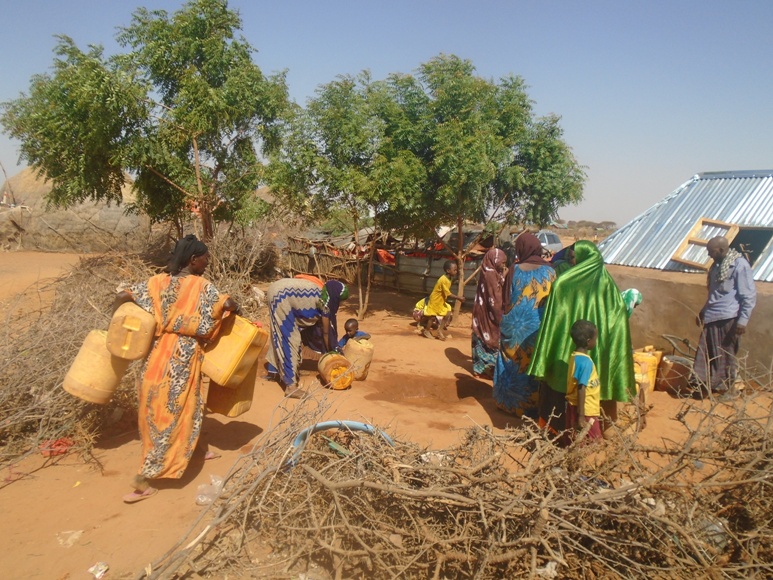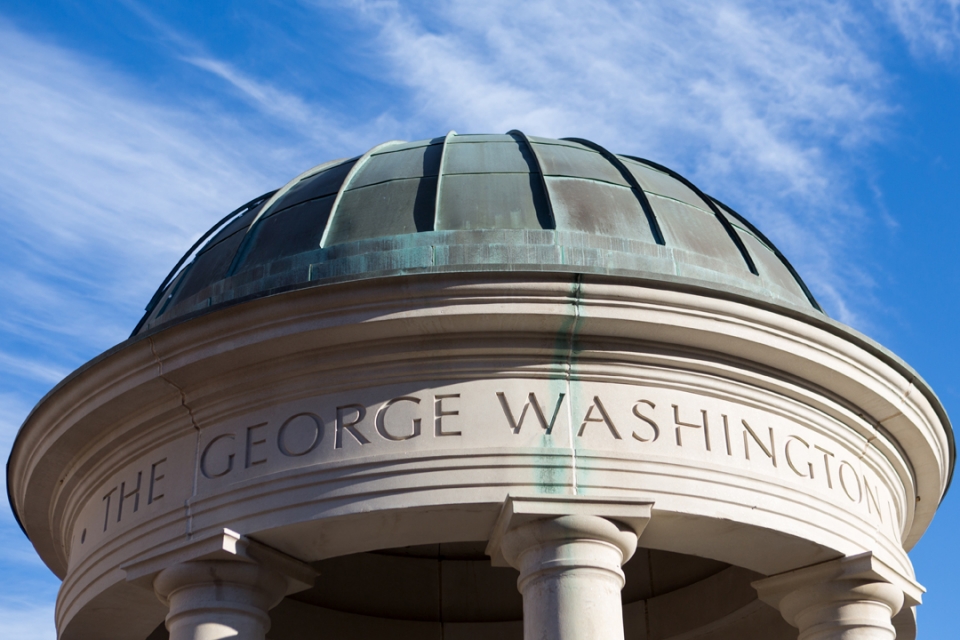By Kristen Mitchell
An Institute for Disaster and Fragility Resilience (IDFR) project that aims to bring together private sector, governmental and nonprofit stakeholders to improve humanitarian relief efforts in Somalia was recently awarded nearly $1 million. Researchers will develop a network to establish, operationalize and test a mechanism for humanitarian innovation in Somalia.
Ky Luu, director of IDFR within the Elliott School of International Affairs, is a former humanitarian first responder and knows how difficult it can be to think long-term during a crisis. While dealing with a viral outbreak or famine, aid workers must focus on the immediate problem at hand, but failing to think ahead stifles innovative solutions, he said.
Existing humanitarian tools and services have not resulted in new, better, more efficient, faster and more appropriate solutions to reduce the impact of disasters in Somalia, Mr. Luu said.
“More often than not there is not enough time for them to take a step back from just responding and think of ways to do things more effectively and perhaps to move the needle beyond relief and looking at longer-term recovery, perhaps addressing root causes of vulnerability,” he said.
About two billion people around the world live in countries where their humanitarian and developmental outcomes are affected by fragility, conflict and violence. The international community has attempted to mitigate these disasters, but is not able to keep up with the growing risk. In Somalia alone, seven million people—about half of the population—need humanitarian assistance, Mr. Luu said.
With a two-year grant from the U.S. Agency for International Development (USAID), Mr. Luu and his team will develop and connect a global network that brings together 80 organizational stakeholders dealing with different issues across the globe. The network will be led locally in Somalia by experts at Benadir University, a private university based in Somalia’s capital of Mogadishu. The project will also bring together the Response Innovation Lab and the Somalia Resilience Program.
Organizations involved in the network can reach out to the group when they face hurdles in whatever challenge they are trying to address. They will then be connected with members of other organizations who have dealt with the same or a similar issue in other parts of the world.
“If they are dealing with a Cholera outbreak in Somalia, maybe the challenges they’re facing are some of the challenges that a humanitarian actor in Yemen just was able to figure out,” Mr. Luu said. “By connecting them, this provides us with an opportunity to support them in real time.”
The goal is for increased long-term planning and to break down the divides that can separate humanitarian specializations and organizations to optimize information sharing. This will allow them to tackle immediate crises quickly and then turn to root causes and systemic challenges.
“Whether it’s silos between local and international actors, whether it’s silos between sectoral interventions where people only focus on water or health or shelter, what we want to do is integrate all of these solutions in a way that addresses a common problem,” Mr. Luu said.
The network aims to put humanitarian relief in the hands of local actors instead of international nonprofit organizations. This is a critical component to creating a lasting strategic approach, Mr. Luu said. If the international community allows local actors to lead and inform solutions, that will benefit the community as a whole and lead to sustainability.
Humanitarian professionals also should look to industry and technology leaders as more than a source of funding. They should also aid small businesses in getting back on their feet after devastation to boost local economies.
Emphasizing partnerships with local actors and the private sector will require humanitarian experts to rethink how they facilitate and deliver aid, Mr. Luu said.
“We have to be serious about what a partnership looks like and who are those stakeholders. A partnership means you respect those who are at the table,” he said. “If the private sector is there, you don’t just ask them for money. If a local stakeholder is there, you don’t treat them as somebody who just gets the resources.”
The GW Institute for Disaster and Fragility Resilience launched in early 2017 as an interdisciplinary effort that combines education and research with on-the-ground training programs in developing countries to prepare local leaders to respond to and recover from disasters.
"The world's most intransigent problems are global in nature and cut across multiple domains such as politics, economics, and security. Students of international affairs are aptly suited to face off against difficult, multifaceted issues because they have been trained to look at the world from multiple perspectives, both geographically and functionally,” said Reuben Brigety II, dean of the Elliott School. “The GW Institute for Disaster and Fragility Resilience, run by Mr. Luu, is a great example of GW contributing innovative solutions to global challenges.”



